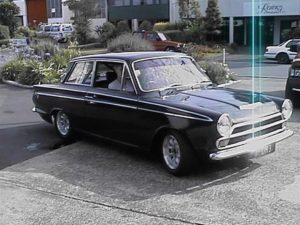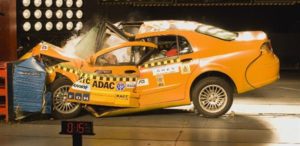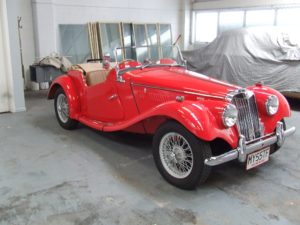A Low Volume Vehicle is any vehicle which has been built or modified in small quantities (Less than 200 per year, for New Zealand)
Not all modifications require Low Volume Vehicle Certification- there is a THRESHOLD- below this no special Certification is needed, above the threshold, then Low Volume Vehicle certification IS Needed.
The threshold schedule is here:Threshold
To anyone who is unfamiliar with Vehicle Certification, this is how it came about.
Once upon a time, all we had were Traffic Regulations 1976 (the TR76’s). Any old thing that looked like a car, van, motorcycle etc. could be put on the road so long as it complied with the TR76’s. People could say “Japanese cars are too light, they crumple in an accident” or “American cars don’t handle or brake” or “Ony Volvo make safe cars” and they would probably all be right. Ever since Ralph Nader, and his book ‘Unsafe at any speed’ there had been pressure to impose standards on car manufacturers.
In New Zealand a range of International Standards was adopted in 1991. Since it would have been futile for little old NZ to impose it’s standards on the rest of the world, what we did was adopt a “Smorgasbord’ of international standards. Your vehicle could meet ADR’s, or FMVSS, or E standards, or Japanese Standards, but is still had to meet one or other set of standards. Standards covered such things as braking, steering, tyres door retention, seatbelt anchorages, etc. Standards introduction dates varied depending on vehicle class- Vans, Utes, off roaders did not have to meet the required standards untill later dates. The level of the Standards increased year by year (together with international requirements) so that newer vehicles are built to higher standards. Unsafe Vehicles (and they are still made) cannot now be sold in New Zealand
This created a problem for hobbyists and vehicle modifiers. Standards Compliance meant that no-one could build or modify any vehicle, in any way. For a country like New Zealand, with it’s incomparable history of vehicle innovation, adaption and modification, this was a disaster.
The Vehicle Modifiers in New Zealand then did something that no-body else in the world had done- it is called the-
LOW VOLUME VEHICLE CODE
(from the LVVTA website)
The Low Volume Vehicle Technical Association Inc (LVVTA) was established by a group of car clubs and associations, all with an interest in vehicle modifications, during 1990 when the Government began to introduce regulations that could affect the motor car hobby. There are ten current member associations of the LVVTA (as of August 2004)
The LVVTA’s primary objectives include:
* to promote and retain the right of New Zealanders to use motor vehicles on the public road that have been modified, or constructed in limited volumes, for sporting, recreational, special mobility or business purposes; and
* to develop and maintain, in consultation with the LTNZ, a Low Volume Vehicle Code, to govern the modification or construction of low volume vehicles; by being incorporated by reference in applicable road transport law; and
* to achieve effective communication with persons concerned with the modification, construction, and certification of low volume vehicles; and
* to remain an independent and autonomous organisation within the motor vehicle industry; and
* to advocate and lobby on behalf of the members of LVVTA to protect and advance these objectives.
In order to achieve these objectives, the LVVTA:
* represents the needs of its members to the Government; and
* develops and continuously improves the LVV Technical Standards that ensure that every aspect of a scratch-built or modified vehicle’s design and construction is carried out as safely as it can be; and
* provides technical support services to the owners of hobby cars in order to assist them through the LVV Certification process; and
* provides training, technical support and all necessary LVV documentation to the LVV Certifiers.
For more information see the LVVTA Site http://www.lvvta.org.nz/
1 Vehicles brought into the country have to have documented evidence of meeting the required International Standards-
See http://www.landtransport.govt.nz/factsheets/44.html
2 Imported vehicles which have been modified then will need LVV Certification for the modifications, even if the vehicle was built before 1991.
3 All cars built after 1955 now are required to have three point seatbelts fitted in the front seats, and this can be a problem in vehicles which were never designed for seatbelts. A LVV Certifier can assist with ways and means of fitting seatbelts.
4 Already registered vehicles which have been modified should get picked up at WOF or COF time. Alternatively the Police have plenty of Pink and Green Stickers, which mean extra and avoidable costs for you. Many owners complain “How come I’ve been getting Warrants for years…”– the only answer is “Do you want to make a complaint against the Warrant agents?”
5 If you are modifying a vehicle, changing an engine, modifying the suspension, fitting wheels outside of the WOF requirements- then TALK TO YOUR LVV CERTIFIER FIRST, then get him to certify it.
John Brett Technology Ltd 0800 LOWVOLUME (0800 569865)



Most recent comments